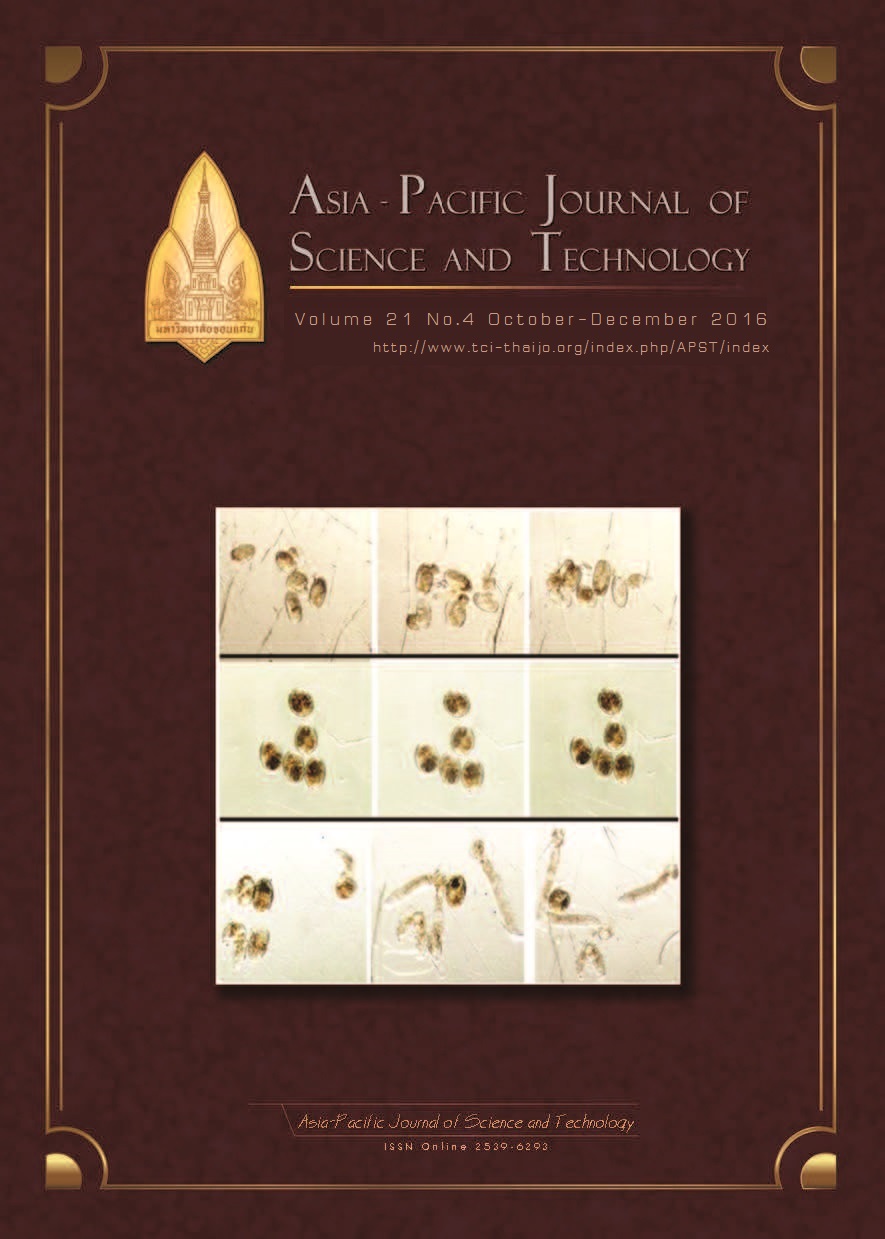Identification of fish-borne trematode DNA in cyprinoid fish using molecular detection
Main Article Content
Abstract
Human liver and minute intestinal flukes are highly prevalent in Southeast Asia. In cases of mixed infections found in a single cyprinoid fish, the metacercariae are necessary in order to identify the morphology. This requires the fish to be digested, which is a process comprising of many steps while taking an entire day to finish. It also necessitates experienced laboratory technicians to identify them under a microscope. As a result, this study attempted to use PCR assays targeting the ITS2 regions to identify and differentiate among species. The length of the PCR amplicons of Opisthorchis viverrini Centrocestus sp and Haplorchis taichui were 380 bp and 530 bp, respectively, for ITS2. Moreover, using the ITS2 primers for preliminary analysis, we were able to detect at least 0.5 metacercariae in 40 mg of fish. This suggests that molecular detection of fish-borne trematode DNA in fish may be useful in identifying fish for quarantine.
Article Details
References
[2] Sukontason, K., Piangjai, S., Muangyimpong, Y., Sukontason, K., Methanitikorn, R., Chaithong, U., 1999. Prevalence of trematode metacercariae in cyprinoid fish of Ban Pao district, Chiang Mai Province, northern Thailand. The Southeast Asian Journal of Tropical Medicine and Public Health 30, 365–370.
[3] Rim, H.-J., Sohn, W.-M., Yong, T.-S., Eom, K.S., Chai, J.-Y., Min, D.-Y., Lee, S.-H., Hoang, E.-H., Phommasack, B., Insisengmay, S., 2008. Fishborne Trematode Metacercariae Detected in Freshwater Fish from Vientiane Municipality and Savannakhet Province, Lao PDR. The Korean Journal of Parasitology 46, 253–260.
[4] Pitaksakulrat, O., Sithithaworn, P., Laoprom, N., Laha, T., Petney, T.N., Andrews, R.H., 2013. A crosssectional study on the potential transmission of the carcinogenic liver fluke Opisthorchis viverrini and other fishborne zoonotic trematodes by aquaculture fish. Foodborne Pathogens and Disease 10, 35-41.
[5] Rim, H.-J., Sohn, W.-M., Yong, T.-S., Eom, K.S., Chai, J.-Y., Min, D.-Y., Lee, S.-H., Hoang, E.-H., Phommasack, B., Insisiengmay, S., 2013. Fishborne trematode metacercariae in Luang Prabang, Khammouane, and Saravane Province, Lao PDR. The Korean Journal of Parasitology 51, 107–114.
[6] Kumchoo, K., Wongsawad, C., Chai, J.-Y., Vanittanakom, P., Rojanapaibul, A., 2005. High prevalence of Haplorchis taichui metacercariae in cyprinoid fish from Chiang Mai Province, Thailand. The Southeast Asian Journal of Tropical Medicine and Public Health 36, 451–455.
[7] Sohn, W.-M., 2009. Fish-borne Zoonotic Trematode Metacercariae in the Republic of Korea. The Korean Journal of Parasitology 47, S103.
[8] Lier, T., Simonsen, G.S., Wang, T., Lu, D., Haukland, H.H., Vennervald, B.J., Hegstad, J., Johansen, M.V., 2009. Real-time polymerase chain reaction for detection of low-intensity Schistosoma japonicum infections in China. The American Journal of Tropical Medicine and Hygiene 81, 428–432.
[9] Traub, R.J., Macaranas, J., Mungthin, M., Leelayoova, S., Cribb, T., Murrell, K.D., Thompson, R.C.A., 2009. A New PCR-Based Approach Indicates the Range of Clonorchis sinensis Now Extends to Central Thailand. PLOS Neglected Tropical Diseases 3, e367.
[10] Webster, B.L., Rollinson, D., Stothard, J.R., Huyse, T., 2010. Rapid diagnostic multiplex PCR (RD-PCR) to discriminate Schistosoma haematobium and S. bovis. Journal of Helminthology 84, 107–114.
[11] Reinstrup, L., Jørgensen, A., Vennervald, B.J., Kristensen, T.K., 2012. DNA extraction from dried Schistosoma haematobium eggs isolated on nylon filters. Transactions of the Royal Society of Tropical Medicine and Hygiene 106, 270–272.
[12] Shafiei, R., Sarkari, B., Sadjjadi, S.M., Mowlavi, G.R., Moshfe, A., 2014. Molecular and Morphological Characterization of Fasciola spp. Isolated from Different Host Species in a Newly Emerging Focus of Human Fascioliasis in Iran. Veterinary Medicine International 2014.
[13] Park, G.-M., 2007. Genetic comparison of liver flukes, Clonorchis sinensis and Opisthorchis viverrini, based on rDNA and mtDNA gene sequences. Parasitology Research 100, 351–357.
[14] Wongsawad, C., Wongsawad, P., 2012. Opisthorchis viverrini and Haplorchis taichui: development of a multiplex PCR assay for their detection and differentiation using specific primers derived from HAT-RAPD. Experimental Parasitology 132, 237–242.


